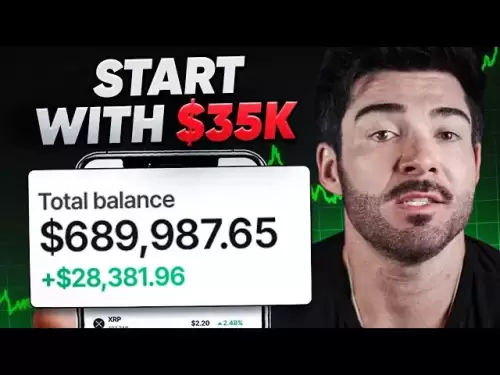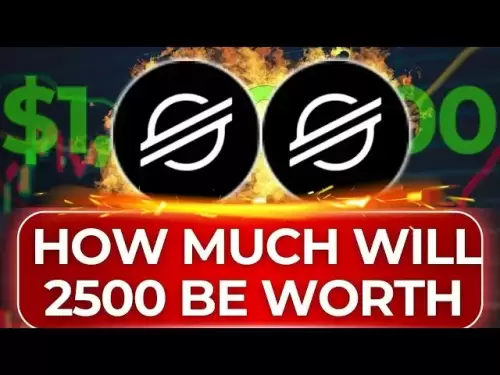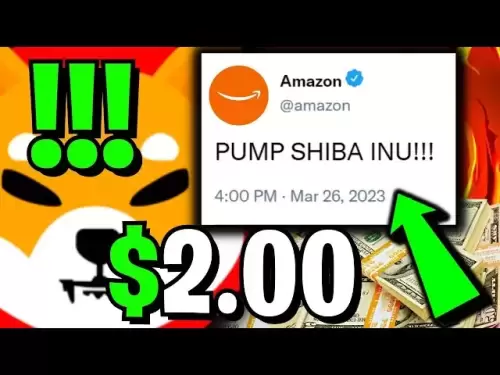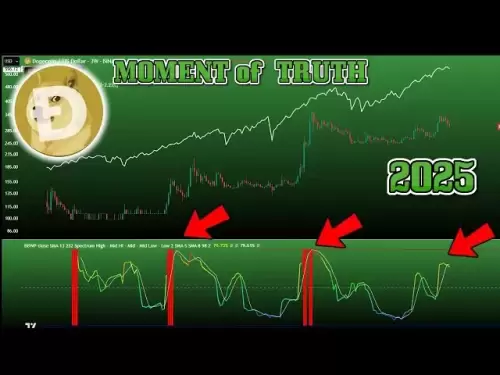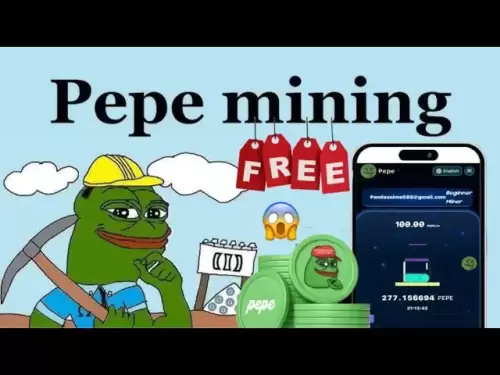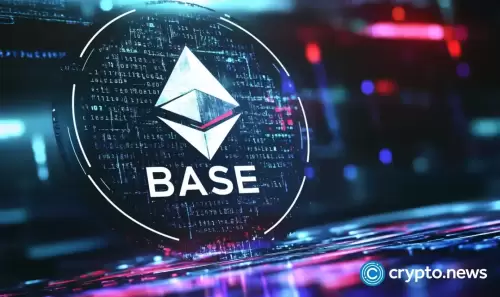 |
|
 |
|
 |
|
 |
|
 |
|
 |
|
 |
|
 |
|
 |
|
 |
|
 |
|
 |
|
 |
|
 |
|
 |
|
Cryptocurrency News Articles
Solana (SOL) price consolidates above $165 as bulls eye a breakout toward $184. Stable fees and Layer-1 momentum drive investor interest.
May 19, 2025 at 04:51 am
input: Solana price consolidates above $165 as bulls eye a breakout toward $184. Stable fees and Layer-1 momentum drive investor interest.
Solana (SOL) price remained above the key support at $165 on Saturday, consolidating gains above the 100-day SMA.
Solana traders now await a breakout above the 150-day SMA at $168.40 to continue the rally toward the 2024 highs.
Stablecoin supply in the ecosystem also saw a slight increase, suggesting ongoing activity within the smart contract platform.
Solana price remained in a range-bound mode on Saturday, closing at $165.55 after trading between $164.55 and $176.80.
The price action was still positive above the 50-day SMA at $147.11 and the 100-day SMA at $142.39, which now acted as dynamic support levels.
Recently, the rally had also pushed SOL past the 150-day SMA at $168.40, although that level now acted as near-term resistance.
Solana RSI also remained above both its signal line and neutral 50, currently printing 56.67.
It had cooled from the recent high at 65.19, but the decline was orderly, suggesting consolidation rather than trend reversal.
The Parabolic SAR continued to trail price action below the candles, which reinforced an intact uptrend.
If the bulls maintained control above the $165-$168 support range, then a retest of the SAR resistance near $184 became a near-term target.
A break above that level would open a path toward $200. However, failure to hold the 50-day SMA may expose downside risk toward $147.
Helius CEO Mert Mumtaz's latest thread on X (formerly Twitter) presented a new narrative, hinting that Solana's technical and economic architecture may prove more resilient than its Layer 2 competitors like Arbitrum and Optimism.
Mumtaz's claims come amid the ongoing debate regarding the "fee drain" from Layer 2s to Layer 1s.
In essence, several crypto analysts pointed out that while L2s like Arbitrum and Optimism are praised for their low transaction fees, they ultimately siphon off a portion of the total fees generated on-chain.
This narrative focused on the fact that a large portion of the network revenue was being channeled to L2s, leaving little to be distributed to validators on the main chain.
However, on May 13, Helius CEO Mert Mumtaz countered this claim, stating that chain revenue is not only relevant but also central to sustainable blockchain economics.
His post, which has been viewed over 63,000 times, aims to correct the narrative and highlight the importance of Layer 1s in the ecosystem.
Helius CEO Says Solana Is Better Than Layer L2s Amid ‘Fee Drain’ Controversy
Mumtaz's argument centers around Solana's parallel fee markets, a key differentiator from Ethereum (ETH) and its rollups.
Unlike EVM-based networks where gas spikes on one app (e.g., a DEX) lead to network-wide fee hikes, Solana's architecture isolates traffic between apps.
This insulation prevents price impact and creates a more predictable user experience.
According to Mumtaz, median fee is a better pricing benchmark than the average, particularly on chains with spiking congestion like Ethereum L2s.
In a follow-up post on May 16, Mumtaz posted a comparative chart showing Median Fee Volatility across major chains including Ethereum, Arbitrum, Base, Blast, and Solana.
The image highlights just how stable Solana's fees remain, even under extreme network usage.
Despite handling 10 to 100 times more volume, Solana maintains its low median fee, unlike competitors who spike under load.
Key insights from the Blockwork's chart show that Solana leads with the lowest fee volatility, with Blast and Ethereum L2s showing high variability, suggesting inconsistent and unpredictable fees to users.
This supports Mumtaz's thesis that Solana's network is not only cheaper—it’s economically sustainable, with more predictable returns for validators, users, and app developers.
Solana Price Prediction: Can SOL Flip ETH's Market Cap in 2025?
If the market digests Mumtaz's data as deeply as it has absorbed L2 hype, then a fundamental re-rating for Solana may be underway.
Solana would require a 400% rally from its current prices around $170, which would be sending SOL toward $700.
From a short-term price action perspective, SOL must decisively break $176 and then close weekly candles above $180 to reclaim its 2024 highs.
Should it do so, then the
Disclaimer:info@kdj.com
The information provided is not trading advice. kdj.com does not assume any responsibility for any investments made based on the information provided in this article. Cryptocurrencies are highly volatile and it is highly recommended that you invest with caution after thorough research!
If you believe that the content used on this website infringes your copyright, please contact us immediately (info@kdj.com) and we will delete it promptly.
-

-

-

-

-

-

- The crypto market never sleeps, and for investors with their ears to the ground, this week brings exciting opportunities!
- May 19, 2025 at 11:45 am
- A seasoned trader or a curious beginner, three names stand out in the crowd for all traders. These are PEPE, Polkadot (DOT), and the fast-rising viral passive income platform, Unilabs.
-

- Dogecoin (DOGE) bulls are bracing for new highs after on-chain metrics flash green
- May 19, 2025 at 11:40 am
- This comes after consecutive weeks of sideways trading despite attempted bullish resistance. On the broader scale, meme coin sentiments have skyrocketed, leading to an over $10 billion addition to the market.
-

-



















